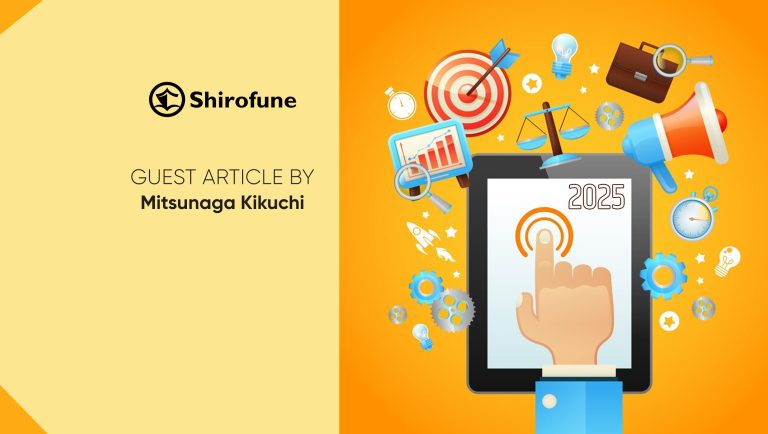Common Pitfalls In Interpreting Intent Data, Best Practices And Balancing Intent Data With Other Metrics, Case Studies On Misguided Campaigns, Tools, And Methodologies For Enhancing Data Accuracy And Reducing Noise:
Intent signals are a promising way to reveal the purchasing intentions of the prospects and optimize the sales funnel, have emerged as the cornerstone of many B2B strategies in today’s data-driven marketing environment. There are risks associated with this increasing reliance on intent signals, though. There is no doubt that intent data provides insightful information, but depending too much on it might result in poor marketing decisions, resource waste, and lost opportunities.
While intent data is a widely used tool in marketing, providing useful insights into prospective clients’ purchasing patterns and aiding in analyzing users’ digital footprints and online activities to improve marketing strategies, it can also be quite ineffective at times. Intent data cannot be employed as a universally applicable solution or as a one-size-fits-all solution.
Let us delve deep to understand the lesser-known details of the intent data discover the reasons behind their ineffectiveness for firms and investigate these constraints. Let’s develop a more calculated strategy to make efficient use of intent data. Let us see how overreliance on intent data can lead to misguided marketing strategies, what the best practices should be followed, and how intent data can be balanced with other metrics. We will also delve deep into the case studies on misguided campaigns and figure out the tools and methodologies to improve the accuracy of data.
This article explores the potential pitfalls of over-relying on intent signals in B2B marketing. It underscores the importance of balancing these signals with other metrics to create more effective and holistic marketing strategies. By understanding the nuances of intent data and integrating it with a broader data set, marketers can avoid common traps and enhance their campaign success.
What Are Intent Signals and Their Significance In The B2B Marketing World?
Important information that indicates a prospective customer’s interest in the product or service in question is called an intent signal. These signals are produced by a variety of online activities, including search queries, social media interactions, web page views, and content downloads. Marketers seek to discover and target prospects who are most likely to be interested in their offerings by examining these habits.
Intent signals have grown in significance in the field of B2B marketing for a number of reasons:
1. Efficiency:
By identifying high-value leads more quickly, marketers can spend less time and energy on unqualified prospects. This is made possible by intent data. A common practice of traditional lead generation techniques is to cast a wide net and sort through a significant number of unqualified leads. This may require a lot of time and resources. However, marketers can concentrate their efforts on prospects who have already expressed interest in pertinent goods or services thanks to intent signals.
A prospect who downloads industry-related whitepapers or frequently views particular product sites, for instance, is probably more valuable than one who hasn’t demonstrated any of these behaviors. Marketers can increase overall efficiency by focusing on these high-value leads and making the most use of their resources and efforts.
2. Personalization:
Marketers may better serve their prospects by customizing their communications and offerings based on their knowledge of what interests them. In today’s competitive B2B market, personalization is becoming a critical difference. Marketers are able to create highly customized communications by using intent signals, which offer insights into the unique interests and pain areas of prospects.
For example, if a potential customer downloads a whitepaper about cloud security, a marketer can send them tailored information about case studies, product offers, and cloud security solutions. This degree of customization raises the possibility of engagement and conversion while also improving the relevancy of marketing materials.
3. Timing:
Marketers may engage prospects at the most advantageous time by using intent signals to determine where they are in the purchase cycle. The timing of B2B sales is crucial. It might be detrimental to a prospect’s buying journey to engage with them too soon or too late. Marketers can determine a prospect’s stage in the purchase cycle with the aid of intent signals.
A prospect is more likely to be in the decision-making stage if, for instance, they are comparing products in-depth or asking for pricing details. Marketers may then customize their approach to address certain issues, offer more details, or schedule demos and trials at the ideal time, all of which will greatly increase the likelihood of conversion.
4. Competitive Advantage:
Organizations that successfully use intent data can have an advantage over rivals by getting in front of prospects. In the fiercely competitive B2B industry, several vendors frequently compete for the same prospects. Since intent data can reveal a prospect’s interest before competitors do, businesses can engage with them before they even recognize them as possible leads.
Types Of Intent Data
With its ability to identify potential customers based on their online activities, intent data is a valuable weapon in the B2B marketing toolbox. First-party, second-party, and third-party intent data are the three main categories of intent data.
When combined, each category can provide distinct insights into the intent of potential customers and greatly improve a business’s marketing and sales efforts.
a) First-Party Intent Data
Direct data on first-party intent is obtained from your own digital domains, such as your website or mobile application. Users who actively interact with your content provide you access to this data, which offers insightful information about their preferences and areas of interest. Important instances consist of:
- Website Visits: Monitoring which pages visitors go to, like the product description or pricing page, can reveal a lot of interest in making a purchase.
- Form Completions: Visitors express their involvement and interest directly by filling out forms, such as those that ask for a trial or download a whitepaper.
Since this kind of data represents actual encounters with your brand, it is quite trustworthy. One of the main components of account-based marketing (ABM) strategies as it enables accurate tracking and retargeting of engaged prospects.
b) Second-party Intent Data
Through collaborations with other businesses that aim to reach equivalent consumers, second-party intent data can be acquired. The platforms where prospects participate in appropriate events and reliable partners provide this data. As example, consider:
- Partner Websites: Your intent data provider may incorporate insights from user-generated comparison and review platforms, such as G2.
- External News Sources: Programs such as Scoops showcase prospects who are interested in particular themes by leveraging engagement analytics from industry news.
Using second-party data gives you a deeper understanding of prospect behavior and helps you go beyond your own digital assets. It improves the depth of your purpose data and adds more information.
c) Third-party Intent data
Data about third-party intent is obtained from a variety of outside websites and services. It provides a thorough overview of every online activity associated with an account. Typical sources consist of:
- Bid stream data: Ads that reveal where and how prospects interact with ads are gathered from online ad exchanges and are referred to as bid stream data.
- Consumption of Content: Interests and purpose can be ascertained by keeping track of the articles, blogs, and case studies that potential customers read.
Websites such as ZoomInfo compile information from other sources to offer insights into accounts that investigate subjects related to your company. This information is useful in identifying prospective customers who may not have interacted with your brand directly but are demonstrating interest in your sector.
d) Continuum of Signal Strength
Continuum of Signal Strength Intent data has a range of signal strengths, from direct, actionable insights to wide, inferred signals. Gaining an understanding of this continuum will improve your go-to-market plan.
1. Derived Signals of Intent
Derived intent signals provide a holistic understanding of prospect behaviors by fusing first-party and third-party data. As an example, consider:
- Ad Engagement: You can use tracking to find out how interested prospects are in your adverts.
- Web activity: Tracking traffic to your website or blog entries about particular subjects.
- Technology Use: Determining which tools and technology potential customers are looking into or utilizing.
By combining data from several sources to produce a more comprehensive picture, these signals offer a sophisticated knowledge of potential buyers’ interests.
2. Zero-Party Intent, or Known Intent
Asking potential customers directly about their wants and objectives is known as zero-party intent or known intent. As an illustration:
- Surveys: Organizations collaborate with platforms such as Qualtrics to conduct professional surveys regarding their ongoing projects and areas of concern.
Because it comes straight from the source and provides a clear understanding of what prospects are actively looking for, this kind of data is very useful.
3. Champion Moves
Champions are important people, like buyers or power users, who have changed jobs or organizations but still have the ability to affect sales in the future. This information is very useful for:
- Targeting well-known influencers within new accounts is known as account-based marketing.
- Retaining connections with current clients who switch jobs is known as customer retention.
Champion moves offer direct routes to possible sales opportunities and are considered a high-value type of intent data.
Every kind of intent data adds a different viewpoint to your marketing plan. When combined, they offer a thorough understanding of the interests and behaviors of prospects, for more precise engagement and targeting. Through the utilization of first-party, second-party, and third-party data, companies can expand their customer base, target certain markets, and improve their marketing campaigns.
Marketing Technology News: MarTech Interview with Alexandra Caceres, Head of Marketing for US @ Metricool
Why Intent Signals or Intent Data Is Not Working Out For You – Common Pitfalls And Challenges
Many companies have looked to intent data in an attempt to gain a deeper understanding of the actions and preferences of their customers to improve marketing strategies. Although intent data has a lot of potential, it frequently doesn’t live up to the hype. The following are the main causes of intent data not being useful to you:
1. Over-Reliance on Intent Signals:
Based on a prospect’s online activity, intent data offers a quick glimpse into their areas of interest. However, relying too much on these signs can be deceiving. Intent data by itself may provide an incomplete picture of a prospect’s purchasing readiness. A visit to a product page or a download of content, for example, can be more indicative of curiosity than of a sincere desire to purchase. If one relies too heavily on these signals without verifying them with other data, it may result in resource wastage and lost opportunities.
2. Inaccurate Positive Results:
A notable issue associated with intent data is the possibility of false positives. In some cases, the data shows an interest that does not exist. There are various reasons why this could occur:
- Random Browsing: Rather than with the intention of making a purchase, prospects may browse your website or interact with your material out of curiosity or for study.
- Shared Devices: Several users on one device may send out conflicting signals, making it difficult to determine someone’s true intentions.
- External Factors: Events in your industry, market trends, or even the actions of your competitors may attract attention, but that traffic may not actually be interested in what you have to offer.
False positives can cause your sales team to waste time and resources by pursuing leads that are unlikely to convert.
3. Insufficient Background Information
Intent data frequently lacks the context necessary for defensible decision-making. It’s important to know why a potential customer clicked on your link or interacted with the content you provided.
In the absence of context, it might be simple to misread cues and infer the wrong things about a prospect’s intentions. For instance, a recent marketing effort may be the cause of a jump in website traffic rather than a rise in interest in your product. You can mistakenly credit this traffic to buyer intent if you don’t take the larger context into account.
4. Incomplete Purchase Journey Of The Buyer:
Usually, intent data only records a portion of the buyer journey. It may express interest in a certain product or piece of content but ignore other important touchpoints. This partial picture may result in tactics that fail to take into account the entire buyer experience, missing out on chances to engage and convert. Intent data needs to be combined with other data sources to paint a more complete picture of a prospect’s journey.
5. Buyer Behavior That Is Oversimplified:
Particularly in B2B contexts where purchase decisions entail several stakeholders and protracted sales cycles, buyer behavior is intricate and multifaceted. Simplifying these intent signals can result in overly simplistic marketing approaches that don’t connect with potential customers. One can overlook the involvement of other important players and the larger decision-making process, for instance, by viewing a single content download as a declaration of intent.
Reducing complex buyer behaviors to simple intent signals can lead to overly simplistic marketing strategies. This over-simplification overlooks the multi-faceted nature of B2B buying decisions, which often involve multiple stakeholders, long sales cycles, and intricate decision-making processes. Key issues include:
- Ignoring Decision Makers: Intent signals may reflect the actions of lower-level employees or researchers rather than key decision-makers.
- Underestimating Complexity: B2B purchases are rarely impulsive and involve thorough evaluation. Simplistic interpretations of intent data may fail to capture this complexity.
- Over-Focus on Intent Data: Over-reliance on intent data can lead to neglecting other critical metrics, such as engagement, demographics, firmographics, and historical data.
To avoid these pitfalls, marketers need a more nuanced approach that integrates intent data with other relevant metrics, providing a comprehensive view of the prospect’s behavior and
6. Insufficient Integration of Data:
Intent data needs to be combined with other data sources in order to be really useful. This comprises historical data, engagement indicators, firmographic data, and demographic data. Intent data remains an isolated component of the puzzle without this integration, resulting in disjointed and unsuccessful marketing campaigns. A more comprehensive perspective of the horizon and better-informed decision-making are made possible by proper data integration.
7. Disregarding Qualitative Perspectives:
The majority of intent data is quantitative and focuses on actions that can be measured. However, a context that intent data alone cannot supply is provided by qualitative insights from market research, sales interactions, and customer feedback. Ignoring these qualitative cues may result in a limited comprehension of the behavior and motivations of potential customers. Integrating qualitative and quantitative data can yield a more complex, nuanced picture of the prospects.
8. Inconsistent Data Quality:
The source and technique of collecting can have a substantial impact on the intent data quality. Poor-quality or inconsistent data can result in erroneous inferences and misdirected tactics. Making judgments based on intent data requires ensuring data dependability and correctness. Ensuring the integrity of your intent data can be achieved through routine quality checks and data validation.
9. Contextual Misunderstanding:
Another common pitfall is the lack of context in interpreting intent signals. Without understanding the broader context of a prospect’s actions, marketers can make incorrect assumptions about their intent. For example:
- Single Data Points: Relying on a single action, like a website visit, without considering other behaviors can be misleading.
- Overlooking External Factors: External factors, such as market trends, seasonal changes, or industry events, can influence online behavior and skew intent data.
- Ignoring Buyer Journey Stages: Prospects at different stages of the buyer journey exhibit different behaviors. Without contextual understanding, marketers may misinterpret early-stage research as buying intent.
Misunderstanding the context of intent signals can result in misaligned messaging, poor targeting, and ultimately, failed campaigns.
Assessing the Effect of Intent Data: Three Essential Methods
Given that it offers insights into the interests and behaviors of potential customers, intent data has emerged as a vital tool for organizations, particularly those operating in the B2B space. To properly integrate intent data into marketing plans and justify its use, however, requires an awareness of the true impact that it has on business growth.
Drawing from insights from a State of Intent Data Study by N.Rich and Driving Demand, which interviewed fifty sales and marketing leaders, let us explore the three main methods to gauge the impact of intent data.
a) Why Should You Assess The Effect Of Intent Data?
The efficacy of intent data must be demonstrated, just like any other business tool or strategy, in order to support its ongoing usage. Teams may secure buy-in for intent data adoption and make well-informed decisions by knowing how it benefits the pipeline and overall growth of the firm. Measuring its effect confirms its contribution to improving marketing campaigns and accomplishing organizational goals.
b) Important KPIs for Assessing the Effect of Intent Data
The study found a number of important measures that companies use to gauge the effect of intent data. The following are the most popular answers:
1. 32% Conversion Rate
According to 32% of respondents, conversion rate is the most often utilized indicator for assessing the value of intent data. By quantifying the number of leads that are pushed through the funnel as a result of a greater understanding of customers’ requirements and interests, this metric produces a measurable result. Businesses can evaluate how well their intent-driven initiatives are converting leads into customers by looking at conversion rates.
Why It Matters?
- Direct Impact: One way to quantify the direct impact of intent data on lead progression is through conversion rates.
- Tangible Results: Offers precise, measurable results that highlight the importance of intent data in boosting sales.
As an illustration, James Wilkinson, the CEO and co-founder of Balance One Supplements, stresses the significance of conversion rates in determining how well intent data moves leads along the sales funnel.
2. Influenced Pipelines/Opportunities (16%)
With 16% of respondents using it to assess the significance of intent data, Influenced Pipelines/Opportunities is the second most often stated measure. Businesses can gauge intent data’s impact on possible chances by monitoring how it moves prospects from awareness or consideration to an accelerated buying phase.
Why It Matters?
- Accelerated Buying: Illustrates how intent data can help prospects make decisions more quickly.
- Pipeline Health: Offers information on how well the sales pipeline is progressing overall and how intent data is influencing it.
For instance, PartnerStack’s Director of Demand Generation, Joe Kevens, emphasizes how knowing customers’ intentions may result in faster and more effective sales cycles.
3. Return on Ad Spend (ROAS) (14%) / Return on Investment (ROI)
Important financial metrics are ROI and ROAS, which are used by 14% of respondents to gauge the effect of intent data. These metrics provide a clear picture of the financial results connected to these initiatives by delving into the financial performance of campaigns powered by intent data.
Why It Matters?
- Financial Performance: Provides a thorough overview of the profits derived from marketing efforts with a purpose.
- Budget Justification: Aids in providing support for marketing expenditures and the distribution of funds for projects including intent data.
For example, when assessing the financial performance of intent-driven initiatives, Ryan Steinolfson, the founder of Accelerate Marketing, emphasizes the significance of ROI/ROAS.
c) Other Measures to Take Into Account
While the main metrics are conversion rate, ROI/ROAS, affected pipelines/opportunities, and ROI/ROAS, other crucial metrics are:
- Sales Qualified Leads (SQLs 9%): This percentage (9%) indicates how intent data has affected the quality of leads.
- New Meetings Booked (7%): 7 percent keeps track of how many new engagements are obtained using intent data.
- Revenue and New Sales (5%): Growth in revenue and acquisition of new customers are directly correlated with intent data (5%).
- Sales Velocity, Deal Size, and Lead Quantity (4%): Provides a comprehensive assessment of lead volume, deal value, and sales speed.
- Customer Lifetime Value (CLV) and Customer Acquisition Cost (CAC) (2%): gives information about the effectiveness and long-term viability of intent-driven tactics.
To validate intent data’s usefulness and support its ongoing integration into marketing campaigns, it is imperative to measure its impact. Businesses may comprehend intent data’s contribution to their growth and achievement by concentrating on critical measures like conversion rate, affected pipelines, and ROI/ROAS.
Furthermore, taking into account additional indicators like as SQLs, newly scheduled meetings, revenue, sales velocity, CAC, and CLV offers a comprehensive understanding of the efficacy of intent-driven activities.
Businesses should incorporate intent data metrics into existing frameworks for measuring performance, keep an eye on it constantly, and modify their plans in response to real-time insights in order to get the most out of intent data. This well-rounded strategy guarantees that intent data will continue to be a potent instrument for advancing corporate expansion and accomplishing marketing goals.
Balancing Intent Data With Other Metrics
Modern marketing techniques now heavily rely on intent data, particularly in the B2B space. It offers insightful information on the interests and habits of potential customers, enabling marketers to find high-value leads and interact with them at the appropriate moment.
Even though intent data has great value, depending only on it can result in poorly thought-out plans and lost chances. It’s critical to balance intent data with other indicators in order to develop a comprehensive and successful marketing strategy. Let us examine the significance of striking this balance and also understand how to do so.
a) Combining Other Metrics with Intent Data
It’s critical to combine intent data with other indicators in order to avoid such mistakes and create a more successful marketing approach. The following are some crucial metrics to take into account:
1. Demographic Data:
A thorough understanding of your target audience’s demographics aids in the creation of tailored messages. For you to successfully segment your audience, age, gender, income, job title, and industry are essential factors.
2. Firmographic Data
Firmographic information such as company size, revenue, industry, and location is critical for business-to-business marketers. This data is useful for focusing marketing efforts on particular companies and sectors.
3. Engagement Metrics
Deeper insights can be obtained by monitoring how prospects engage with your material across various mediums. Email open rates, click-through rates, social media interactions, and the amount of time spent on websites are examples of metrics that show the efficacy of your content and messaging.
4. Customer Journey Mapping:
It’s essential to comprehend the consumer journey when planning when to engage with them. Delivering the appropriate message at the appropriate moment is facilitated by identifying touchpoints where potential customers contact your brand and by charting their path from awareness to purchase.
5. Behavioral Data:
A complete picture of your prospects can be obtained by examining general behavioral data, which includes past purchases, browsing history, and brand interactions, in addition to intent signals.
6. Sales Data
Understanding which leads convert and why is made easier by working together with the sales team to connect sales data. Your targeting and messaging tactics can be improved by using this data.
7. Customer Feedback:
Qualitative insights into prospects’ pain concerns and areas of value can be obtained by surveying, reviewing, and directly interacting with current customers to get their input.
To properly balance intent data with other metrics do the following:
- Data Integration: To combine data from several sources, use solutions such as a Customer Data Platform (CDP). This gives you a cohesive picture of your prospects and facilitates the creation of more precise profiles.
- Cross-Functional Collaboration: Make sure the teams in charge of customer support, sales, and marketing work together. Strategy alignment and comprehension of the customer journey are improved when insights and data are shared between departments.
- Regular Data Audits: To guarantee accuracy and applicability, examine your metrics and data sources on a regular basis. This aids in locating any holes or discrepancies that can distort your study.
- Contextual Analysis: Contextual analysis and intent data should be combined to determine the “why” behind a prospect’s behavior. Focus groups and interviews are examples of qualitative research techniques that can be used to accomplish this.
- Segmentation and Personalization: Segment your target and develop individualized marketing strategies with the help of the integrated data. Conversion rates rise when you personalize your messaging with a comprehensive grasp of your prospects.
- Monitoring and Optimization: Keep an eye on the effectiveness of your campaigns at all times, and modify your plans in response to current information. To improve your strategy, employ A/B testing and other optimization strategies.
Even while intent data is a very useful tool for contemporary marketers, it shouldn’t be utilized alone. You may gain a deeper knowledge of your prospects by combining intent data with engagement, firmographic, behavioral, and demographic variables.
Through the process of merging and evaluating these various data sources, marketers are able to create more precise, efficient, and tailored plans that yield superior outcomes. Adopting a comprehensive strategy for data-driven marketing guarantees that you can accomplish sustainable growth and successfully negotiate the intricacies of the contemporary marketing environment.
Case Studies on Misguided Campaigns
Intent data is essential for addressing potential customers in today’s data-driven marketing environment. However, it can result in misleading campaigns when misapplied or misconstrued. To guarantee that marketing tactics are successful and efficient, let us look at case studies of similar campaigns and investigates techniques and technologies to improve data accuracy and lower noise.
a) Misfire Company
The first case study is on the internet merchant Misfire Company, which specializes in consumer electronics.
- Campaign Goal:
The retailer targeted high-intent consumers based on their online activity, such as often visiting product pages and downloading brochures, in an effort to increase sales.
- The Misguided Approach
The Misguided approach took place because of:
i) Misinterpretation of Data: The business believed that every visitor to their upscale product pages was a prospective customer. Nonetheless, a large number of these visitors were comparing prices rather than being prepared to buy.
ii) Absence of Context: The users’ reasons for visiting the pages were not explained by the intent data. Many had no intention of making a purchase; they were only seeking information.
- Result
Despite having low conversion rates, the campaign led to large spending on targeted advertisements. The business wasted a lot of marketing funds before realizing too late that its interpretation of the data was incorrect.
b) Case Study 2: A vendor of B2B software.
The Second case study is about a vendor specializing in B2B software
Campaign Objective:
To attract companies interested in their new project management software by means of lead generation.
- The Misguided Approach
i) Excessive Dependency on Third-Party Information: The business made significant use of third-party intent data that suggested interest in project management subjects. To differentiate between students, researchers, and true commercial buyers, the data was not specific enough.
ii) Oversimplification: Due to the oversimplification of the intent signals, a wide range of indifferent audiences were included in the targeting strategy.
- Result:
There were a lot of clicks on the campaign, but not many qualifying leads. The sales team wasted time and energy on a plethora of leads that did not match their target client profile.
Tools and Methodologies for Enhancing Data Accuracy and Reducing Noise
Improved data accuracy and less noise in intent data are crucial to avoiding the traps shown in these case studies. To that end, the following resources and approaches will help you:
1. Multi-Layered Data Validation
Tool required:
Customer Data Platforms (CDPs: Customer Data Platforms (CDPs) are a multi-layered data validation tool.
Methodology:
- Integrate Multiple Data Sources: CDPs have the ability to combine data from third-party sources (external intent data providers) and first-party sources (website interactions, CRM records).
- Cross-validation: To cross-validate intent signals, use data from many sources. For instance, a user’s aim is probably sincere if they often visit your website and interact with pertinent content on other websites.
Benefit:
By utilizing a variety of data sources, this method aids in removing noise and discovering intent signals that are more accurate.
2. Behavioral Analytics
Tool Required:
Behavioral Analytics Tool: Tools to understand the behavior of the audience is the Behavioral Analytics tool where Amplitude, Mixpanel, etc. are a few examples of this tool.
Techniques:
- Detailed User Analysis: Make use of behavioral analytics tools to examine user behavior on your platform in great detail. Look past acts that seem superficial, such as page visits, to identify the series of behaviors that signify true interest.
- Segmentation: Users can be divided into groups according to their patterns of behavior. Users who constantly add things to their basket but never check out, for example, could require different targeting than those who check out frequently.
Benefit:
By analyzing user intent in detail, marketing campaigns may be more precisely tailored to meet the needs of target audiences.
3. Machine Learning Algorithms
Tools Required:
Using machine learning platforms (like Google AI and Amazon SageMaker) is ideal for the following methodology
Methodology:
- Predictive Modeling: Using past data, create predictive models to pinpoint users with high intent. Large volumes of data can be analyzed by machine learning algorithms to improve the accuracy of future behavior predictions.
- Continuous Learning: Implement methods for continuous learning that are flexible and get better with time. The models improve in their ability to discern between noise and true intent as more data is gathered.
Benefit:
By continuously improving the standards for high-intent signals and learning from historical trends, machine learning improves the accuracy of intent forecasts.
4. Contextual Analysis
Tools Required
Natural Language Processing (NLP) Tools for Contextual Analysis (e.g., IBM Watson, Microsoft Azure NLP)
Methodology:
- Text Analysis: Search searches, messages on social media, and online reviews are examples of text data that can be analyzed using natural language processing (NLP). This aids in comprehending the background of user behavior.
- Sentiment Analysis: Use sentiment analysis to determine the attitude and tone of user communications. Stronger purchase intent may be indicated when positive sentiment and pertinent intent signals are combined.
Benefit:
Contextual analysis helps differentiate between true purchase intent and casual interest by offering a deeper knowledge of user motives.
5. Feedback Loops
Tool Required: CRM Systems (e.g., Salesforce, HubSpot) as a tool can be used for feedback loops
Methodology:
- Closed-Loop Feedback: Put in place methods for sharing insights and results between the marketing and sales departments. This aids in improving the interpretation of intent data based on practical outcomes.
- Lead Scoring Modifications: Based on input from the sales force, make ongoing modifications to lead scoring models. Converting leads can be examined further to improve the standards for signals with strong intent.
Benefit:
Feedback loops lessen the possibility of poorly targeted advertisements by ensuring that intent data methods are updated on a regular basis based on real-world results.
Even while intent data is a potent instrument for contemporary marketing, its efficacy depends on precise interpretation and noise reduction. Campaigns that are misguided frequently result from an over-reliance on intent signals without enough context or validation. Businesses may improve the accuracy of their intent data and create more successful marketing strategies by putting multi-layered data validation, behavioral analytics, machine learning, contextual analysis, and feedback loops into practice.
The case studies that are presented emphasize how crucial it is to accurately comprehend and analyze intent data in addition to gathering it. Marketing professionals can steer clear of common errors and attain superior results by utilizing tools and processes that offer deeper insights and validate data from different sources. In the end, a well-rounded strategy that incorporates intent data with additional metrics and ongoing improvement is essential to make your marketing campaigns successful.
Best Practices to Avoid Misguided Campaigns: Enhancing Intent Signals and Data Accuracy
Intent data has become essential for creating tailored and successful campaigns in the field of digital marketing. On the other hand, efforts that are misdirected can result from relying too much on intent signals without sufficient accuracy checks and context. The best strategies for avoiding such problems and making the most use of intent data are outlined below:
1. Boost the Return on Investment of Your Social Media Advertising
To boost the return on investment of your social media advertising here are the things you must do. Let us understand the type of challenge that can come and the best practices to overcome them:
Campaigns Challenge:
If you rely too much on intent data without context, you may target people who aren’t actually interested in your items, which will cost you money in wasted advertising.
Best Practice:
To improve relevance and overlay social media targeting choices, use intent data.
Execution:
- Integrate Intent Data with Social Media Platforms: On social media, utilize intent data to fine-tune your audience groups. For example, you can import bespoke audiences based on intent signals on Facebook and LinkedIn.
- Modify your bidding tactics: For users with strong intentions, up your bidding budgets. This guarantees that people who are more likely to convert from just clicking on your adverts will see them.
- Keep an eye on and improve campaigns: Analyze your campaigns’ performance on a regular basis. Track conversions and engagement metrics using tools like Google Analytics, and modify your targeting and messaging accordingly.
Avoiding Pitfalls:
- Contextualize Intent Signals: Make sure that user behavior patterns are taken into account when using intent data. For instance, repeated visits to a product page may not necessarily signify an intention to buy.
To improve accuracy, combine intent data with psychographic and demographic information. For example, Caitlin Cascade of Atlanta’s Social Media Superstars highlights the importance of superimposing intent data on social media targeting in order to restore efficacy that has been compromised by privacy modifications. They observed better return on investment (ROI) from their social media marketing campaigns by raising their bidding budgets for highly intent users.
2. Increase Conversions with Personalized Content and Messaging Challenge:
Campaign Challenge:
Generic content that doesn’t interest users can result from relying only on intent data, disregarding user behavior and preferences.
Best Practice:
Customize content and messaging based on user needs by utilizing intent data.
Execution:
- Analyze Search Terms and User Activity: To determine search terms and user activity on your website, use tools such as Google Analytics and Search Console.
- Customize Content Offers: Provide downloadable materials that correspond with users’ search intent, like templates and walkthroughs. Visitors can be guided by using live chat prompts according to their individual needs.
- Audience Segmentation by Intent: To divide consumers based on their degree of buy intent, employ behavioral analytics tools such as Hotjar. Make sure your CTAs and content are appropriate.
Avoiding Pitfall
Constant Content Assessment: Evaluate your content’s effectiveness on a regular basis. To make sure it stays current and useful, update and improve it in response to user input and engagement data.
As an illustration, Resolute Technology Solutions customizes content offers using intent data. They produce targeted content, such as downloaded PDFs and customized live chat prompts, by analyzing search searches, and this considerably increases conversions.
3. Inform Product Development
Challenge:
Developing products that don’t appeal to the intended market can result from relying too much on intent data without first confirming user demands.
Best Practice
Use intent data to better understand user demands and guide product development, as a best practice.
Execution:
- Gather and Examine User Feedback: To acquire thorough user data, use tools like CIENCE GO Data and CIENCE GO Show. Examine this data to find recurring issues and needs.
- Develop with Intent Insights in Mind: Product development teams may better match additions and enhancements with user wants by sharing insights from intent data.
- Evaluate and Rework: Create beta versions or prototypes based on insights from intent data. To ensure that the product meets user needs and to make any necessary modifications, conduct user testing.
Avoiding Pitfall
- Assure Data Completeness: To obtain a comprehensive picture of user demands, combine intent data with firsthand user input and market research. Avoid using intent data as the exclusive basis for development decisions.
As an illustration, CIENCE leverages intent data to improve nurturing and personalization workflows and their product offerings. They acquire comprehensive user information to inspire product enhancements and upgrades by creating tools such as CIENCE GO Data.
4. Improve Your Site Navigation
Improving site navigation can be unsuccessful if intent data is the only thing on your mind and user experience is neglected.
Best Practice:
To improve site navigation and user experience, combine intent data with user behavior analysis.
Execution:
- Make Use of Heatmaps and Session Recordings: Resources such as Hotjar offer insightful data on how visitors engage with your website. Use these insights to pinpoint areas of difficulty for navigation.
- Clearly Showcase Important Products: Make sure that your website’s most popular goods and services are easily accessible based on statistics about user behavior.
- A/B Evaluation: To assess the effects of navigational modifications, do A/B testing. Segment users based on purpose data, then evaluate how they behaved before and after the adjustments.
Avoiding Pitfalls
- Moderate Approach: Don’t depend just on purpose information. To guarantee that navigational modifications are efficient and user-centric, take into account feedback and the overall user experience.
For example, PhotoAiD employed Hotjar to examine user behavior and enhance site usability. Sales increased significantly when popular products were prominently displayed on the site.
5. Personalize Users’ Website Experience Challenge:
Challenge
Generic user experiences might result from an over-reliance on intent data in the absence of real-time customization.
Best Practice:
For both known and anonymous users, tailor website experiences using intent data.
Execution:
- Employ Predictive Analytics: Determine possible clients by looking at their internet behavior using predictive analytics solutions. G2Crowd and similar platforms are useful for monitoring relevant topics and user interactions.
- Dynamic material Customization: By using marketing automation tools, you can provide consumers with material that is tailored to their interests and browsing habits. To collect user data for additional customisation, encourage form fills.
- Real-Time Personalization: Utilize tools such as Better Proposals to incorporate a personalized online experience that prompts users to perform particular actions.
Avoiding Pitfalls
- Preserve Relevance: To keep tailored material interesting and relevant, update it frequently. Steer clear of static personalization that doesn’t change with the ways that users interact.
As an illustration, Better Proposals provides tailored material to anonymous visitors on the website, tailoring their experience according to their activity. This tactic promotes form completion and raises interaction.
6. Segment Your Audience to More Effectively Target Them
Challenge:
Inaccurate segmentation based solely on intent data may result in resource waste and inefficient targeting.
Best Practice:
Segment your audience correctly using intent data to focus your marketing and sales activities.
Execution:
- Behavioral Segmentation: Based on a user’s digital behavior patterns, segment them using intent data. Determine warm, cold, and highly qualified leads
- Targeted Messaging: Create offerings and marketing messages specifically for each target audience. Align your communications with each group’s unique needs and interests by using purpose data.
- Resource Distribution: Distribute marketing and sales resources according to each segment’s potential. Concentrate on high-intent portions for nurturing and quick follow-up.
Avoiding Pitfalls:
- Comprehensive Data Analysis: For precise segmentation, combine intent data with psychographic and demographic data. Review and modify your segments frequently considering fresh information and performance indicators.
For Example, Freelance Writing Jobs use intent data to find prospects that are highly qualified and to maximize marketing initiatives. For optimal return on investment, they enhance ad messaging and spearhead nurturing strategies by precisely segmenting their target.
Final Thoughts
Without a doubt, intent data is a potent weapon in the toolbox of the contemporary marketer. It provides a means of developing marketing tactics that are more immediate, personalized, and targeted by identifying signals of interest from potential customers. However, there are serious issues associated with the increasing dependence on intent signals, including oversimplification, false positives, and contextual misunderstandings. For marketing to be effective, intent data must be integrated with other metrics and tactics must be continuously improved upon based on thorough insights.
Accurate targeting and the success of campaigns depend on the balancing of intent data with a variety of data sources, including demographic, firmographic, and behavioral information. This connection makes sure that marketers don’t misread intent signals on their own, which could result in ineffective campaigns and resource waste. Marketers can create a more comprehensive and nuanced image of their audience by taking into account a larger context and utilizing a variety of data sets.
Marketers who interpret data ought to take a more complex and comprehensive approach. Data accuracy and noise reduction can be improved by utilizing the recommended procedures and resources. Adopt a thoughtful approach to intent data and combine it with other indicators to build strong, successful omnichannel marketing plans that will provide outstanding customer service and spur company expansion. Here is a call-to-action plan to implement:
- To gain a complete understanding of prospects, combine intent signals with data from other sources, such as firmographic and demographic information.
- Always remember the intended signals’ greater context. Analyze patterns over time and connect them to external factors.
- To make sure your intent data strategy is still effective for you and helps you reach your goals, evaluate and modify it on a regular basis.
- Collaborate closely with the sales team to validate intent signals and gather qualitative insights.
Business-to-business (B2B) marketing has been transformed by intent signals, which offer faster outreach, more efficient lead identification, customized engagement, and a competitive edge. By fine-tuning their approach, more effectively allocating resources, and understanding and using these signals, marketers may dramatically improve their chances of converting high-value prospects.
Although intent data is an invaluable tool, it must not be the exclusive focus. Campaigns will be more successful and have more precise targeting if it is integrated with a variety of data sources and constantly refined using deep insights.
Businesses that effectively leverage intent data might outshine their competitors by reaching out to prospects ahead of time. Marketers can fully utilize intent data by following these best practices and constantly improving their strategy. Higher conversion rates, more focused targeting, and ultimately a more effective marketing plan will result from this.
Effective use of intent data necessitates more than just signal collection. It entails combining data from several sources, placing it in the context of user behavior, and iteratively improving techniques in light of actual results. Businesses can improve data accuracy, lower noise, and develop more focused, successful marketing campaigns by adhering to these best practices. Comprehensive data analysis, as opposed to an over-reliance on intent data alone, guarantees that campaigns are successful, tailored, and relevant.
Marketing Technology News: How Is Martech Revolutionizing Lead Scoring and Lead Qualification






















